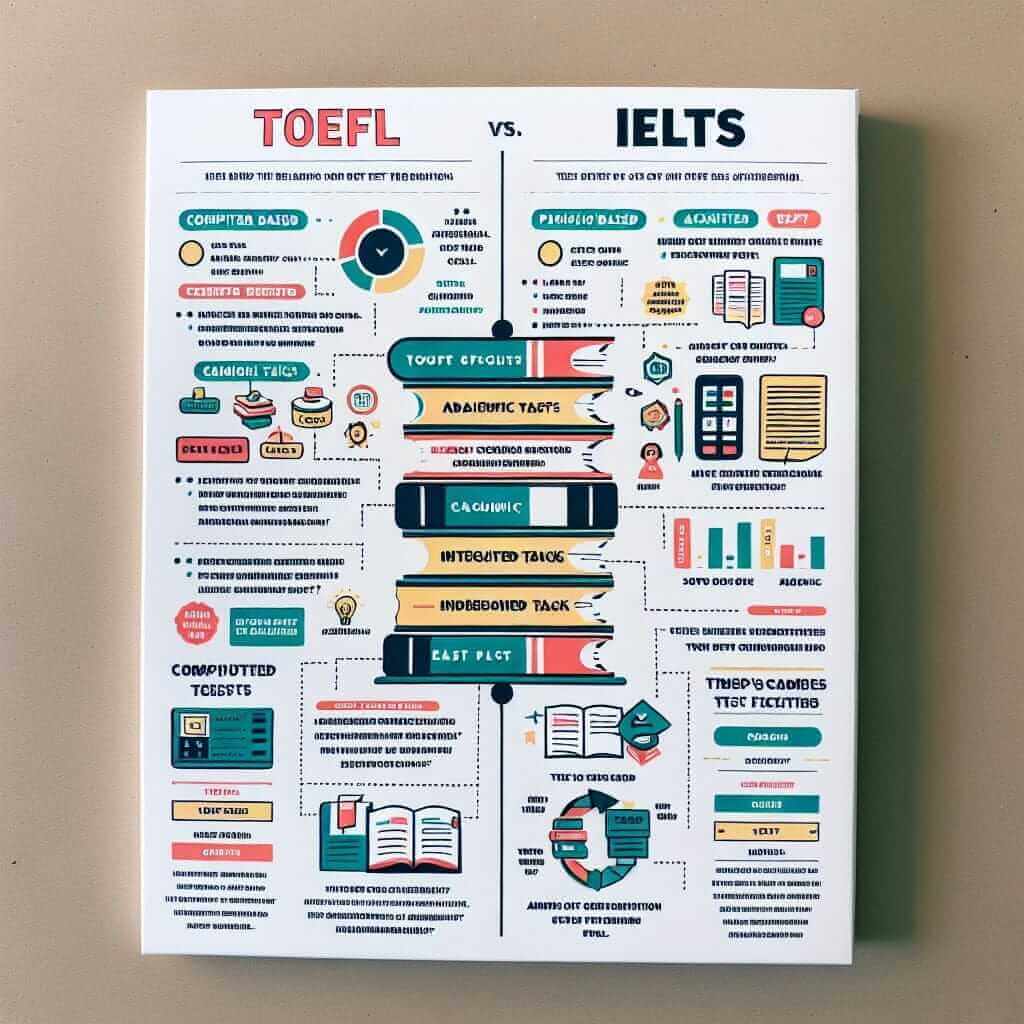As an IELTS instructor with over 20 years of experience, I often encounter students who are initially confused about the difference between TOEFL and IELTS. Both are internationally recognized English proficiency tests, but they serve different purposes and have distinct formats. Understanding these differences is crucial for choosing the right test for your academic or professional goals.
What do TOEFL and IELTS Stand For?
Let’s start with the basics:
- TOEFL stands for Test of English as a Foreign Language.
- IELTS stands for International English Language Testing System.
TOEFL vs. IELTS: Understanding the Key Differences
While both tests evaluate your English language skills, several key differences set them apart:
1. Purpose and Acceptance:
- TOEFL is primarily used for North American English and is widely accepted by universities and institutions in the United States and Canada. It is also often required for student visa applications.
- IELTS is geared towards British English and is more widely accepted in the United Kingdom, Australia, New Zealand, and other Commonwealth countries. It is also recognized by many institutions in the US and Canada. IELTS is often a requirement for immigration purposes.
2. Test Format and Content:
- TOEFL is entirely computer-based and focuses on academic English. It assesses your listening, reading, writing, and speaking skills through multiple-choice questions, integrated tasks, and an independent essay.
- IELTS offers both paper-based and computer-delivered options. It assesses your English proficiency in academic and general training contexts. IELTS includes listening, reading, writing, and speaking sections, featuring a wider variety of question types, including multiple-choice, short answer, sentence completion, and an interview with a certified examiner.

3. Scoring System:
- TOEFL uses a score range of 0-120, with each section (reading, listening, speaking, writing) scored out of 30.
- IELTS uses a band score system from 0-9, with half-band scores possible. Each section receives a band score, and an overall band score is calculated.
How to Choose the Right Test
The best test for you depends on your specific circumstances and goals:
- Consider your academic or professional aspirations: Research the specific English language proficiency requirements of the institutions or organizations you are interested in.
- Think about your learning style and preferences: Do you prefer computer-based tests or paper-based formats? Are you more comfortable with American or British English?
Tips for Success:
No matter which test you choose, preparation is key:
- Familiarize yourself with the test format and question types: Practice tests and sample questions are invaluable resources.
- Develop a consistent study schedule: Focus on improving your overall English language proficiency in all areas: reading, listening, writing, and speaking.
- Seek guidance from experienced instructors: Consider enrolling in an IELTS or TOEFL preparation course to receive structured instruction and personalized feedback.
Choosing between TOEFL and IELTS is a significant decision in your English learning journey. By understanding the differences between these tests and carefully considering your individual needs, you can confidently choose the path that best aligns with your goals. Good luck!